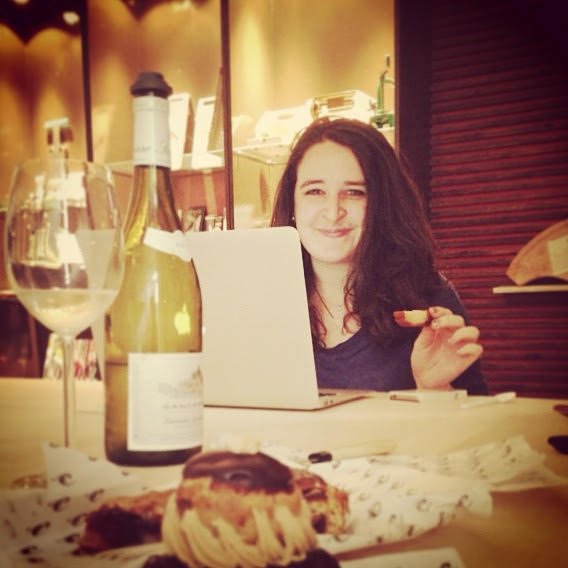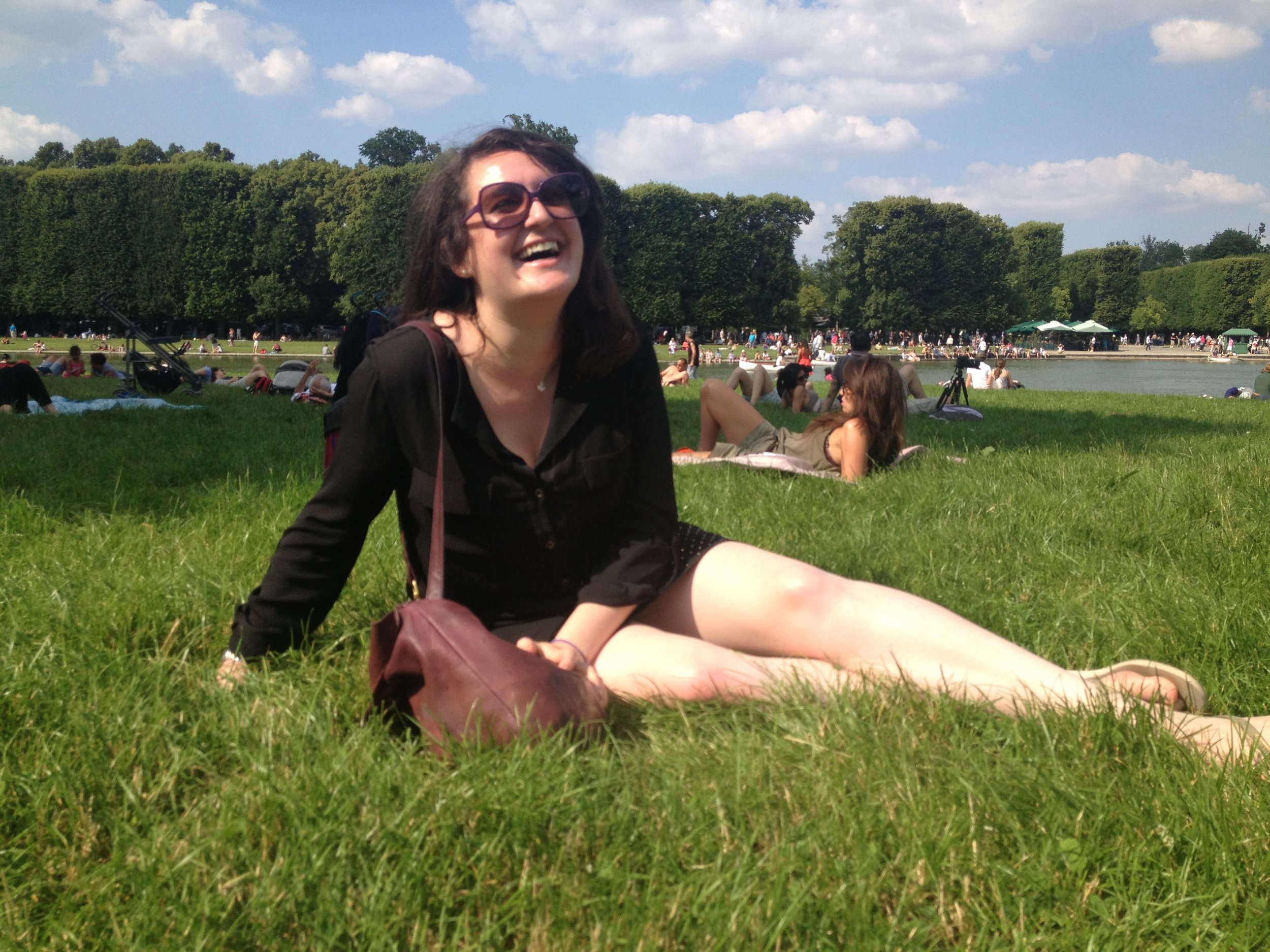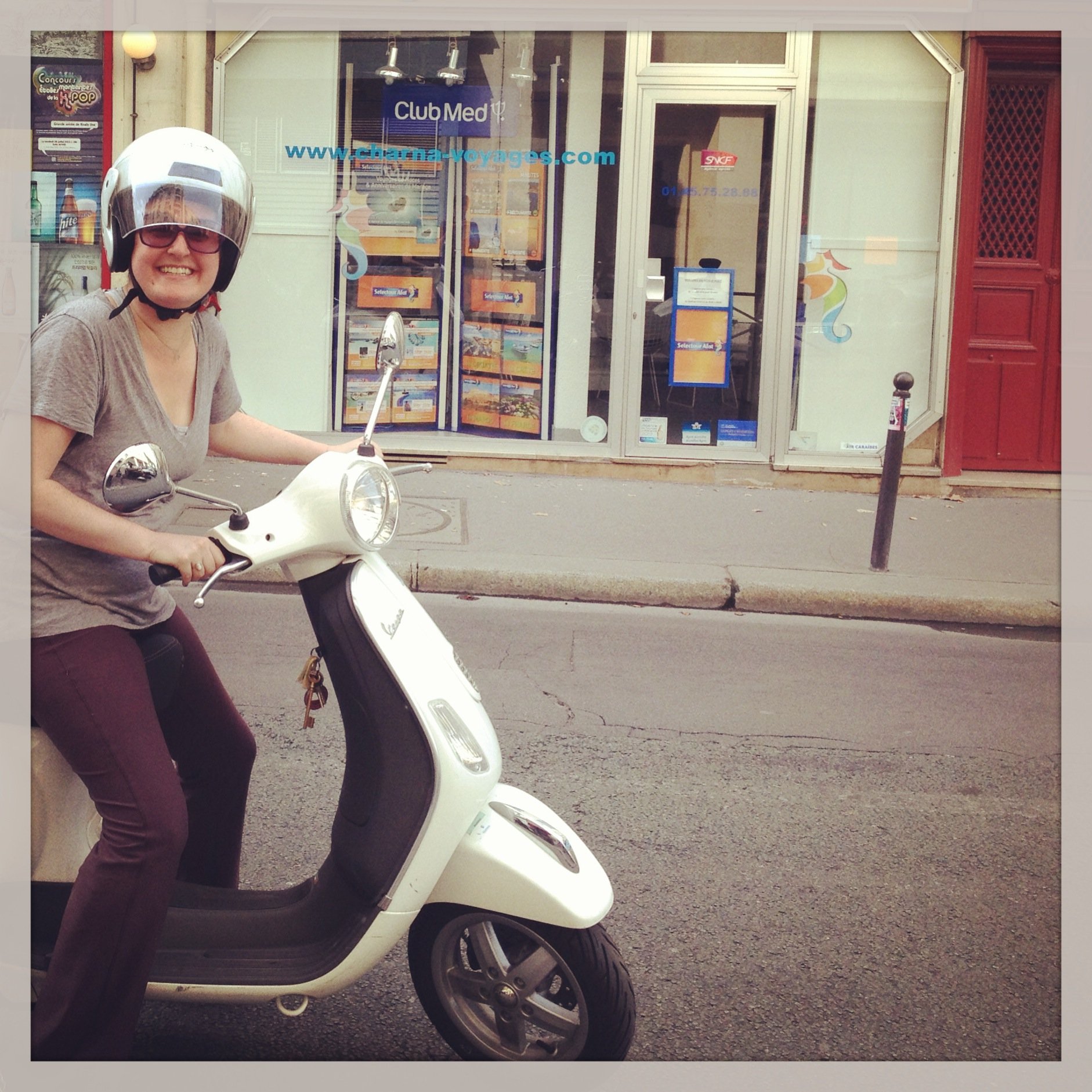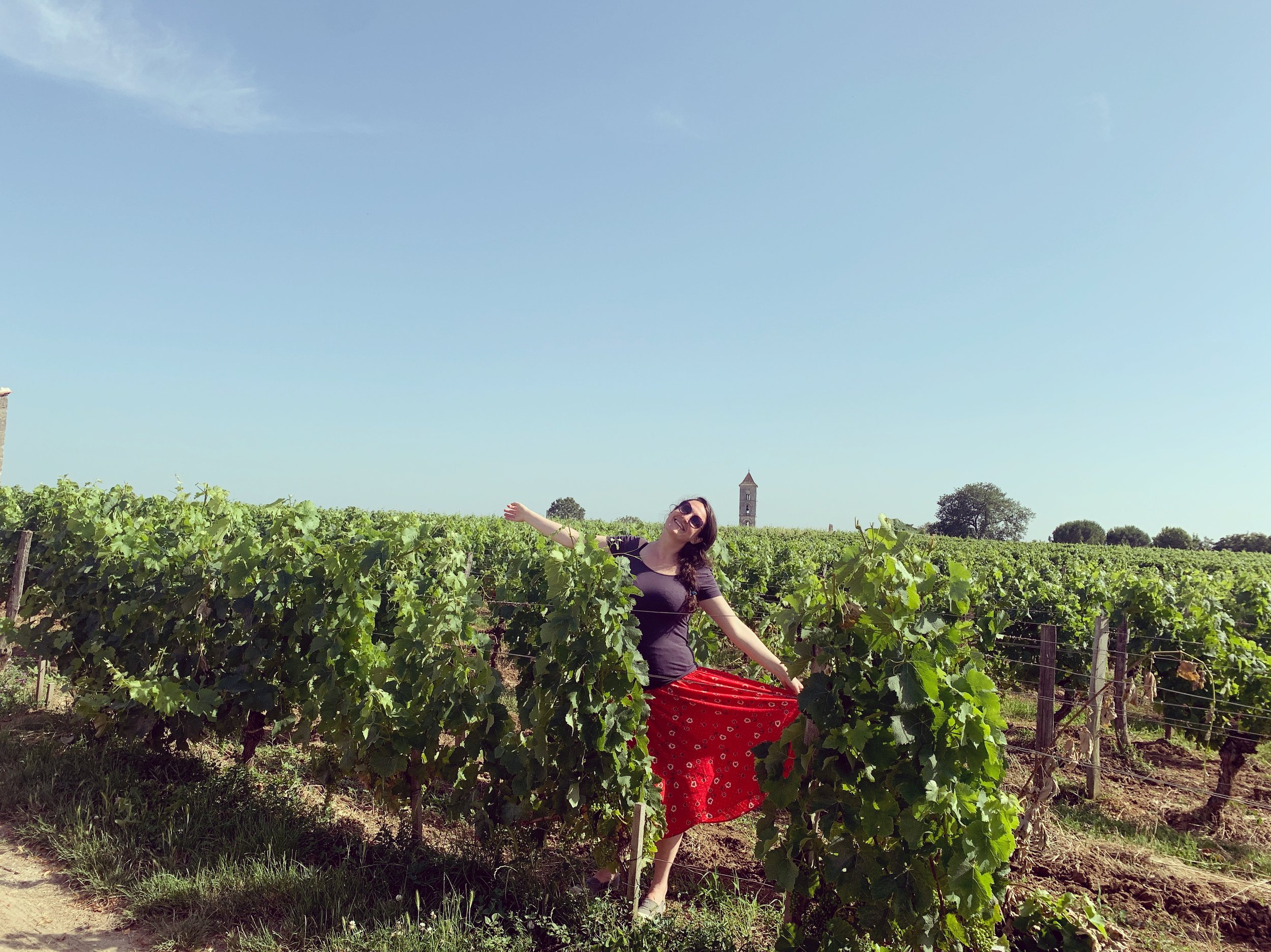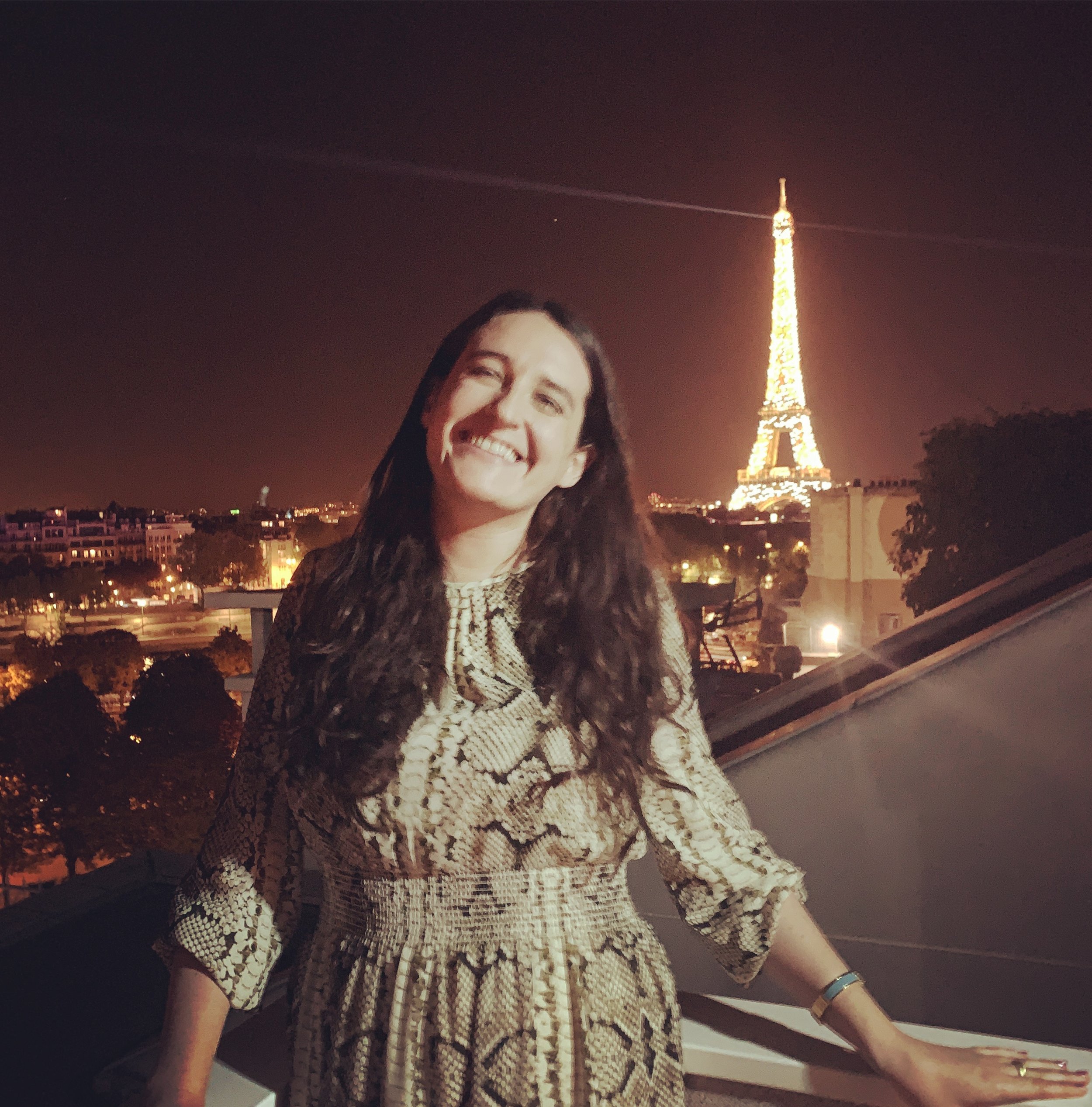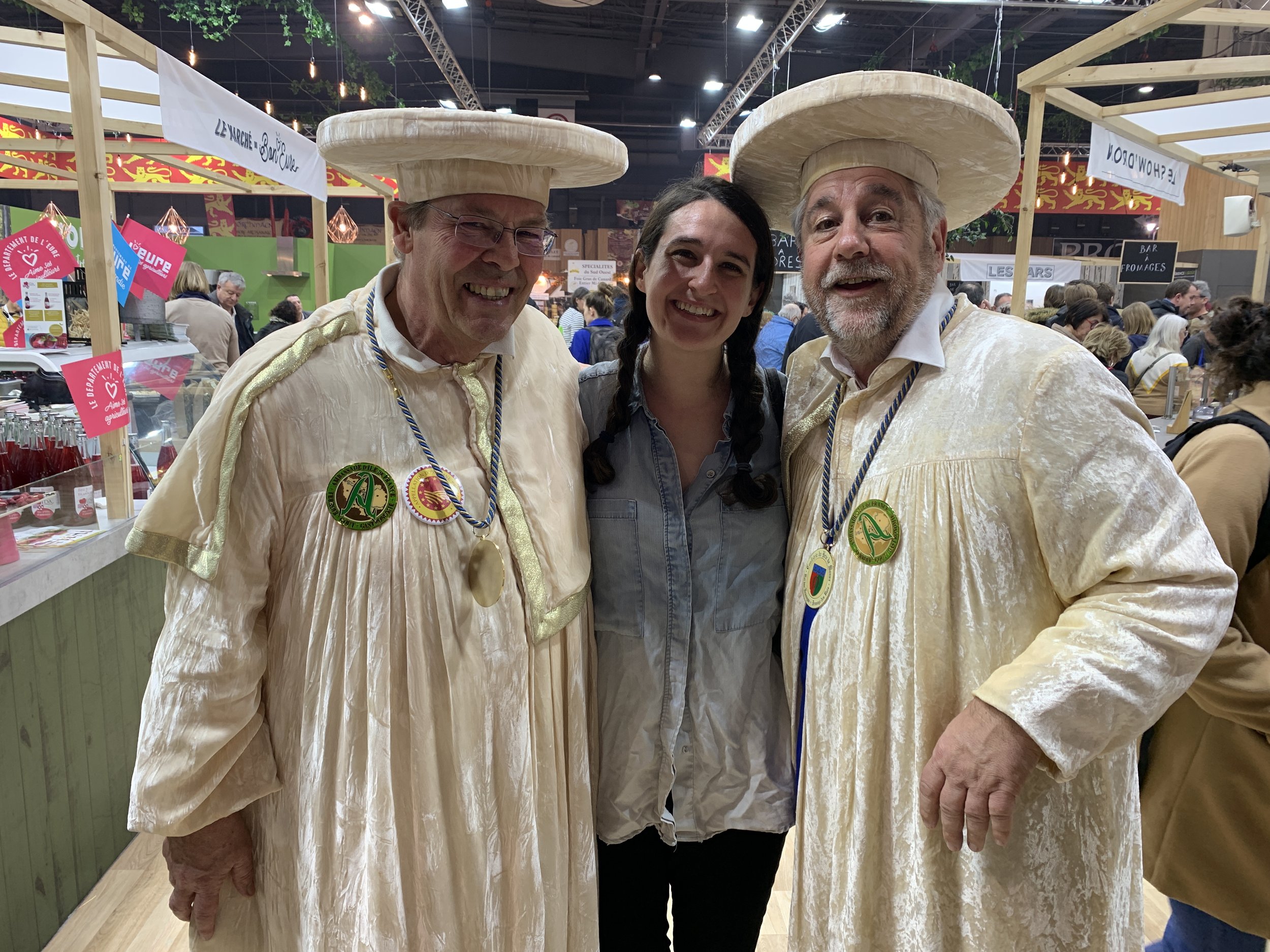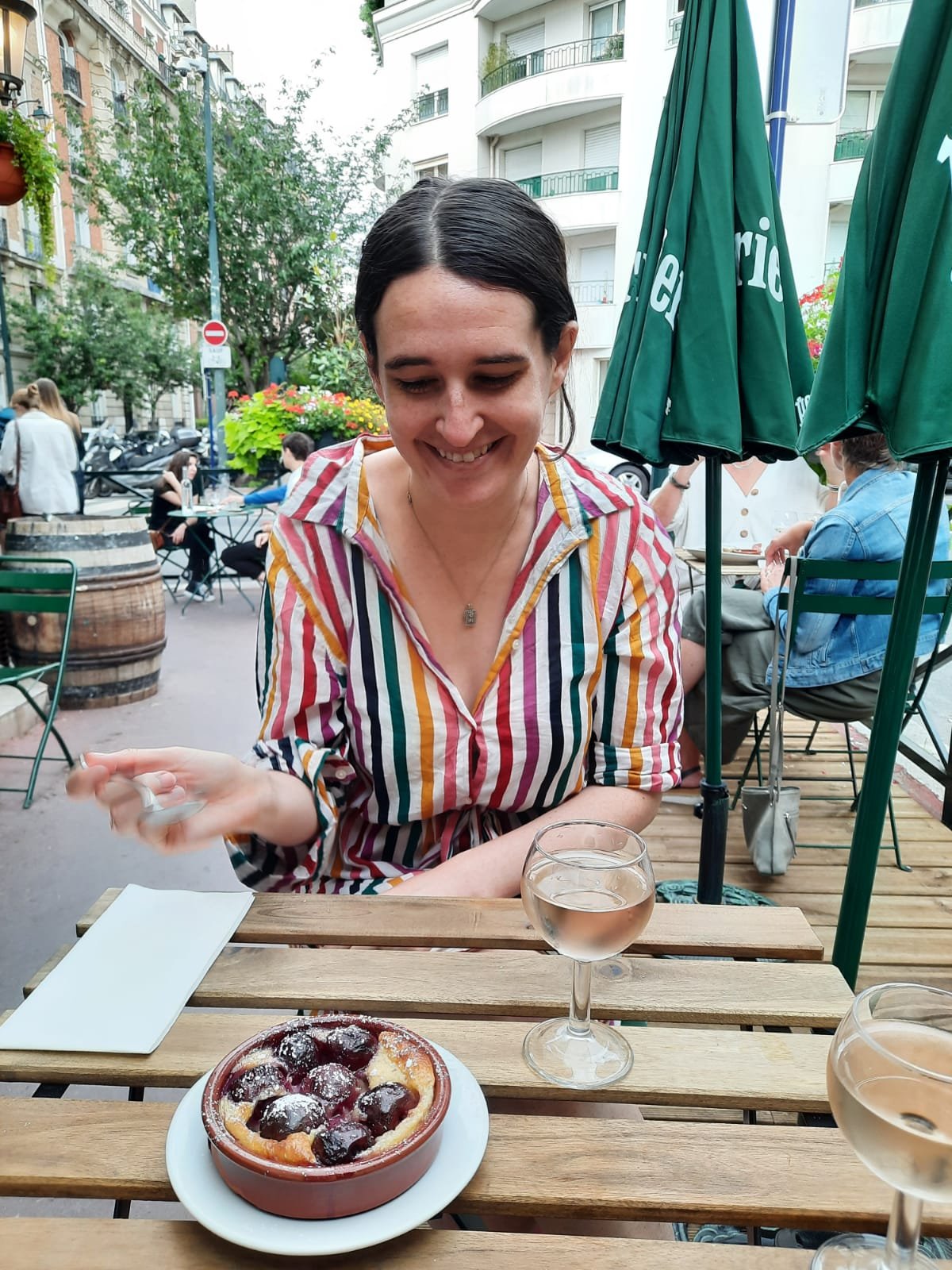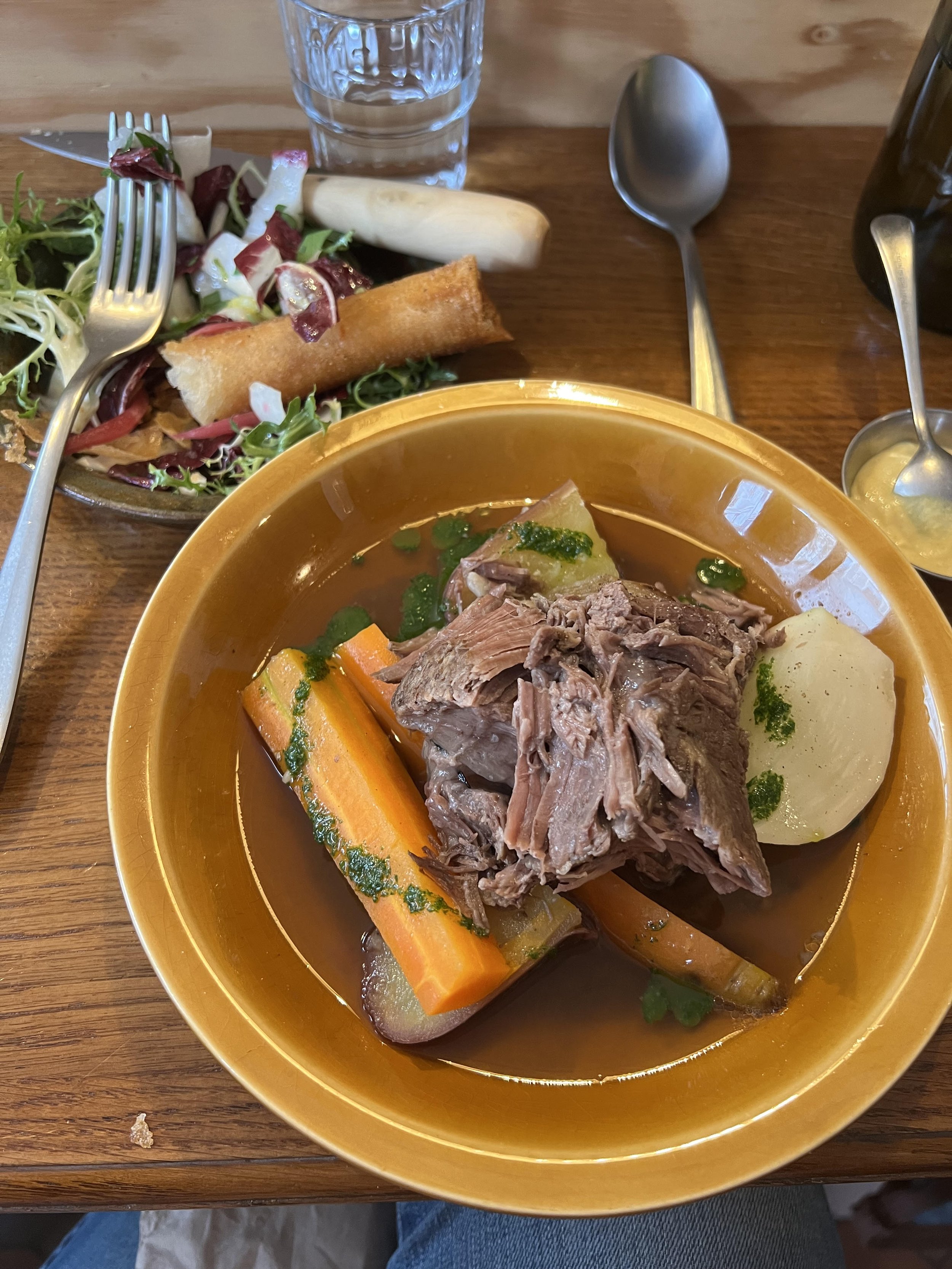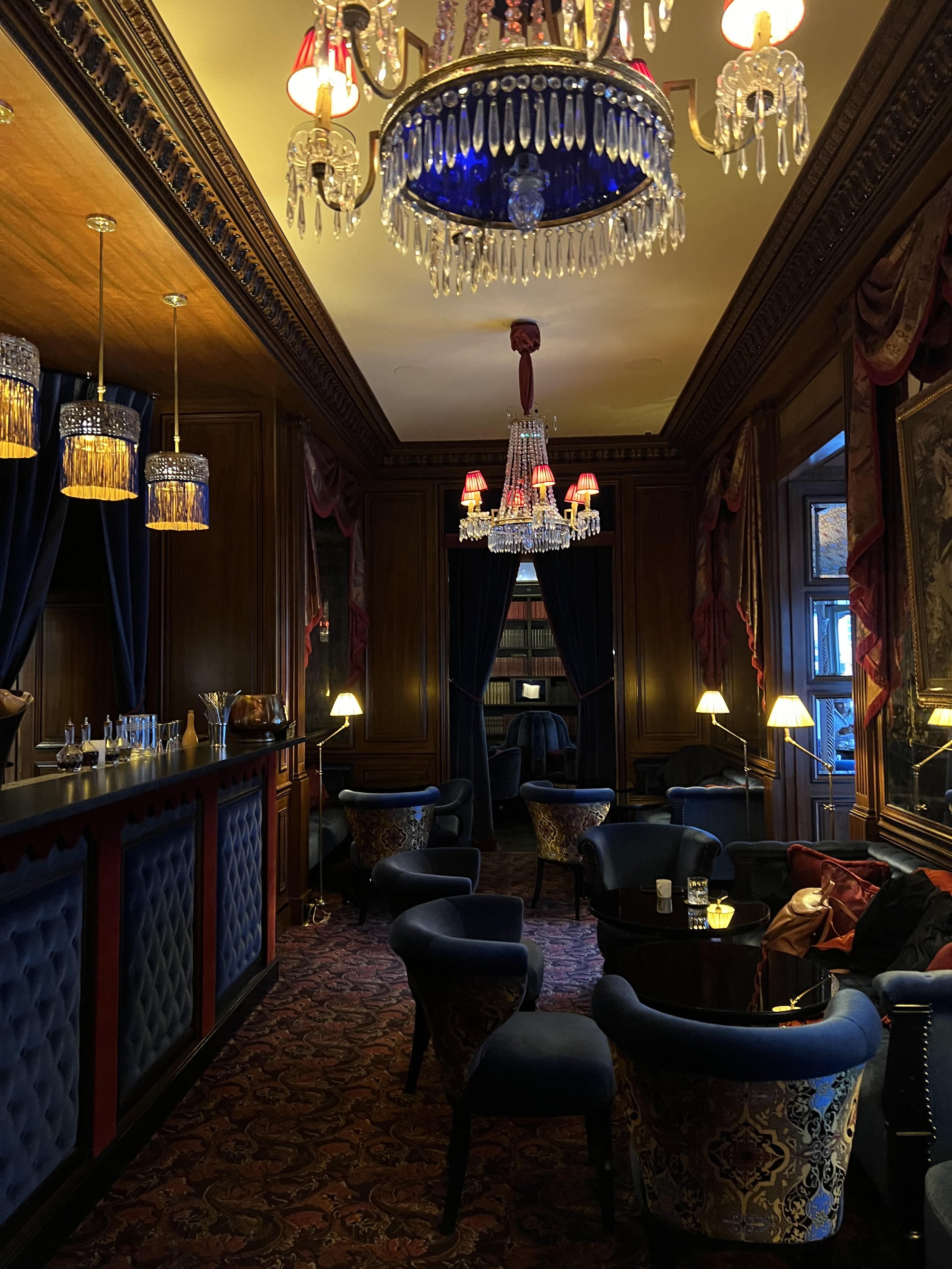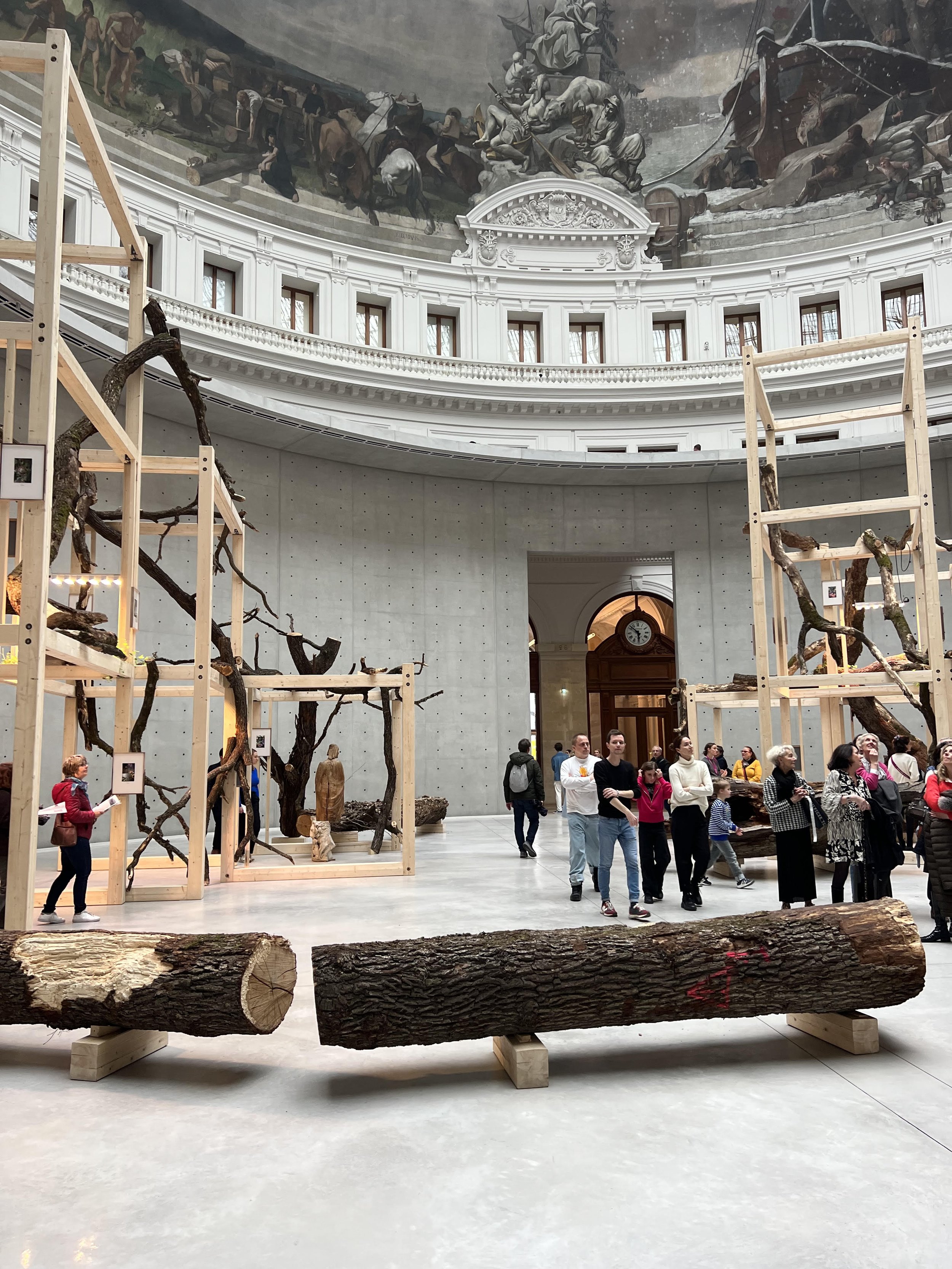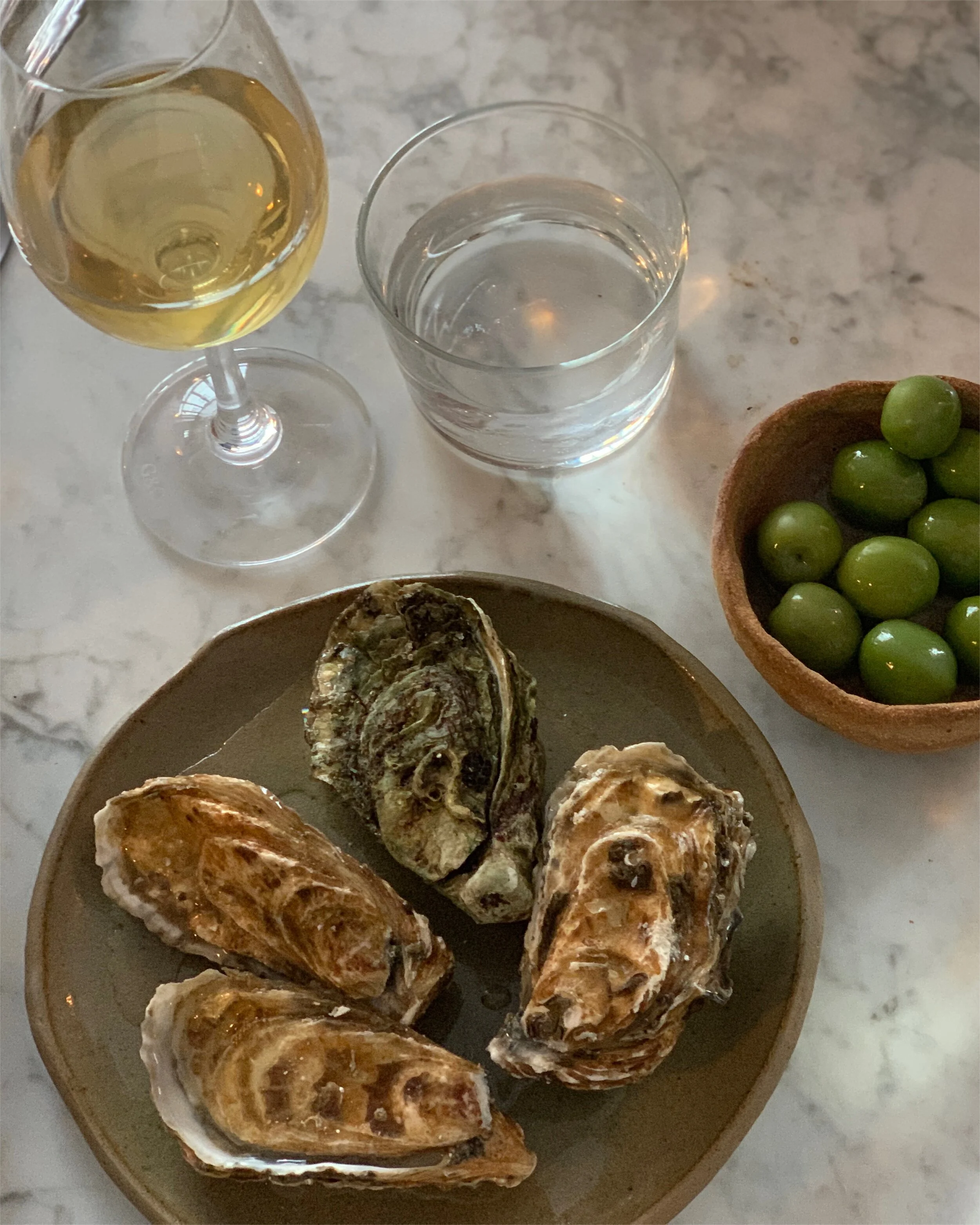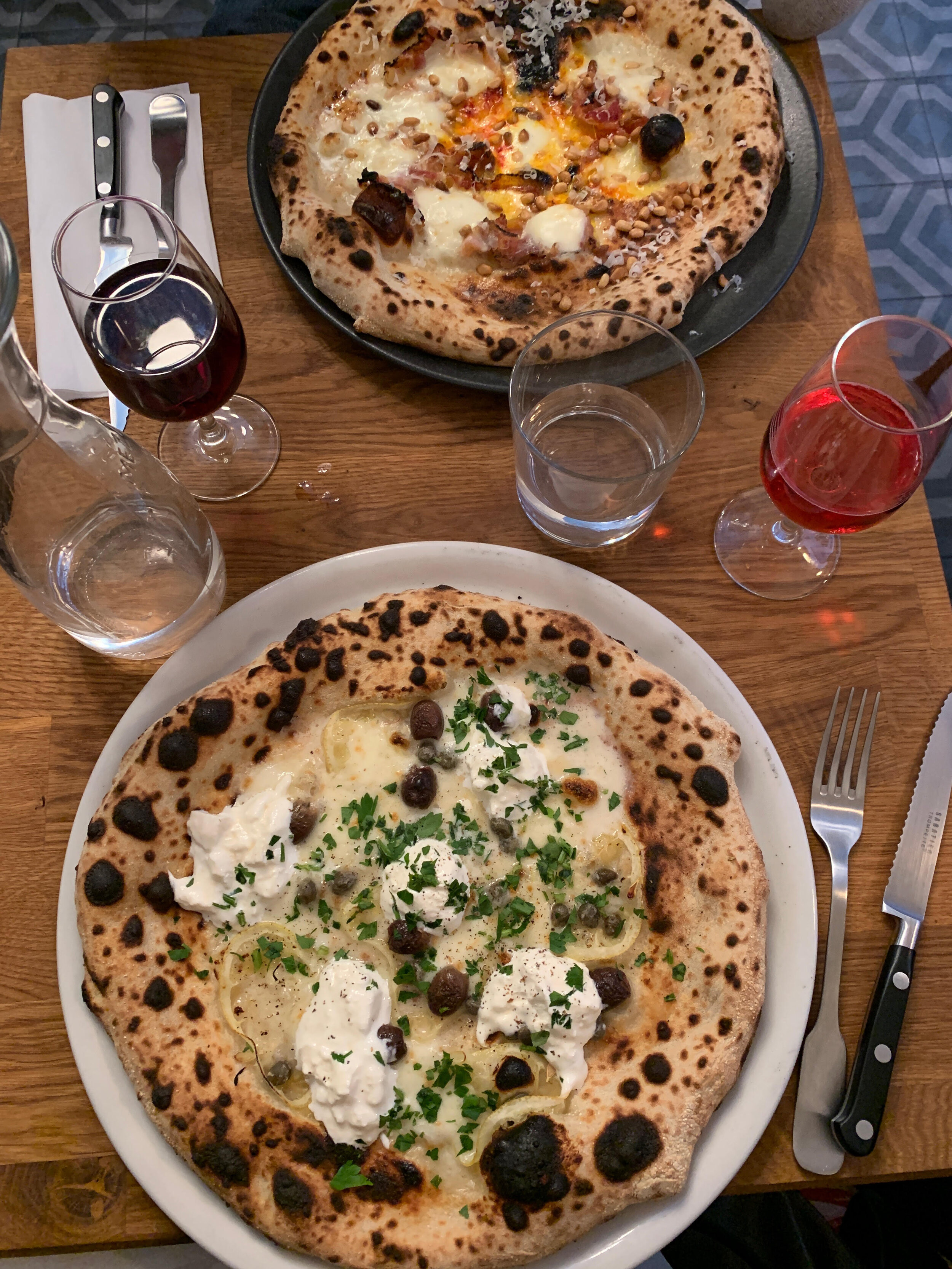The 6th Arrondissement
Treize au Jardin
What’s available: Southern American classics like pimento cheese, sausage gravy, artichoke dip, and layer cakes.
Delivery or Takeaway: Takeaway. Some delivery available through UberEats but not the entire city.
When: Call or e-mail them specifically for your takeaway order, but their current pick up times have been from 3pm-7:30pm.
Where do I order: http://tre13e.paris/takeaway/ or, in some areas, through UberEats
Don’t miss: Biscuits, y’all.
Ten Belles
Check out their listing under the 10th arrondissement for more information.
The 7th Arrondissement
Chez L’Ami Jean
What’s available: Basque chef Stéphane Jégo has been on the forefront of chefs pushing for more support from the insurance industry and French government for the financial losses that the small businesses have been suffering. His normally gut-busting, seasonal Basque cuisine has been adapted for takeaway and delivery in the form of a 3 course, 35 euro meat or vegetarian tasting menu. There are also classics like his famous terrine or parmesan creme soup available à la carte.
Delivery or Takeaway: Both. Delivery is a 12 euro fee. Delivery outside the city center is available, but charges may vary. Orders must be placed by 6pm the night before.
When: Tuesday- Saturday. Orders must be placed by 6pm the night before.
Where do I order: https://corporate.tiptoque.com/collections/page-chef-stephane-jego
Don’t miss: The legendary rice pudding. With caramelized nuts and salted butter caramel sauce, it’s the decadent comfort food we all need right now.
Café Varenne
What’s available: The classic café, beloved by Patricia Wells, has cropped their menu down to single daily entrée, plat, and dessert for 5 euros, 15 euros and 4.50 euros respectively. Expect well-executed classics like sausage with potato purée, carrot salad, terrine maison, leeks vinaigrette and flan caramel. You can still pick up café croissant in the morning, too.
Delivery or Takeaway: Takeaway only
When: Monday-Friday 8am-4pm
Where do I order: Call 01 45 48 62 72 to order
Don’t miss: The homemade desserts
Café des Ministères
What’s available: The menu spans casual snacks like housemade terrine sandwiches, to café fare like escargots with bone marrow or lamb with polenta and wild mushrooms, to truly luxurious like vol au vent with scallops and fish or wild hare à la royale. A full wine list is available for delivery, too.
Delivery or Takeaway: Both. Delivery fee in Paris is 5 euros, for the petite couronne it’s 10 euros, but delivery fees are waived for orders that are 50 euros and up. Deliveries will be made from 12pm-4:30pm, takeaway hours are 10am-12pm and 5pm-7pm on the designated days.
When: Wednesday-Saturday. Orders must be placed by 6pm the night before you want it.
Where do I order: contact@cafedesministeres.fr
Don’t miss: Chou farci with foie gras
The 8th Arrondissement
Stay tuned…
The 9th Arrondissement
Sister Midnight
What’s available: Bottled cocktails from the American duo behind Red House and Sister Midnight. Classic cocktails with a twist like an old-fashioned flavored with pandan and chocolate-cinnamon bitters, or original creations like “I want to be your (salty) dog” are available in date night size (2-3 cocktails for 18 euros) or party size (8 cocktails). Plus, they come with homemade garnishes like brandied cherries or seasoned salts. Craft beers also available.
Delivery or Takeaway: Takeaway only.
When: Orders must be placed the night before for click & collect.
Where do I order: https://www.sistermidnightparis.com/
Don’t Miss: The corpse reviver— I know I feel like a corpse right now and could definitely stand to be revived.
À L'Étoile d'Or
What’s available: Step back in time at this old-fashioned candy shop from gregarious octogenarian Denise Acabo. You’ll find an impressive selection of Bernachon and Bonnat chocolate bars, perfumed marshmallows, old-timey hard candies, and bars of sticky nougat. Gifts are beautifully wrapped in out-of-print comic book paper.
Delivery or Takeaway: Takeaway. Their instagram says they can do some deliveries, too, if you call 01 48 74 59 55.
When: Hours are variable, but typically she is open Monday-Saturday
Where do I order: In person.
Don’t miss: The kalouga salted butter caramel bar from Bernachon.
Mamiche
What’s available: Cinnamon buns, babkas, creme brulée doughnuts, cookies, miche, orange blossom brioche, and other buttery baked treats. The majority of their products are fermented naturally for more than 24 hours so quantities are limited and must be ordered in advance. They have sandwiches available on-site, too.
Delivery or Takeaway: Delivery is currently ONLY being done in the 1, 2, 3, 4, 5, 6, 7, 8, 9, 10, 11, 17, 18 and 19th arrondissements. Delivery fees are 2.90 euros. Takeaway also possible at either location in the 9th or 10th, although I know from experience that lines tend to be long!
When: The bakeries are open Tuesday-Friday 8am-8pm and Saturday from 8am-7pm. Deliveries must be ordered by 3pm the day before you wanted your baked goods delivered. They have 20 delivery slots for the morning and 20 for the afternoon so available delivery spots will sell out fast!
Where do I order: https://www.mamiche.fr/
Don’t miss: Fresh pizza dough! They’re probably more known for their babka and doughnuts than anything else, but I’m excited about homemade pizza with very little effort.
Wild & The Moon
See their listing under the 1st arrondissement for more information on click & collect and delivery.
The 10th Arrondissement
Bouillon
What’s available: The cheap & cheerful bouillon has set-up two click & collect stations in Paris— one at their original location in Pigalle and the other in front of their new (still under construction) location at Republique. You can still find a lot of their hearty classics like boeuf bourguignon, oeuf mayo, potato and smoked herring, leeks vinaigrette, and confit de canard at dirt cheap prices. And don’t forget classic desserts like mousse au chocolat or crème caramel.
Delivery or Takeaway: Click & collect at either of their addresses in the 10th or 18th.
When: Republique is open every day with continuous pick up slots from 11am until 7:45-8:20pm (depending on the day). Pigalle is closed Wednesdays, but open Monday-Tuesday and Thursday-Sundays with continuous pick up slots from from 10:30am-9:30pm.
Where do I order: https://bouillonservice.com/
Don’t Miss: The menu de la semaine. The special menu changes each week but you can get entrée, plat and dessert for only 10 euros. Hard to find a better deal in Paris.
Ten Belles
What’s available: All three coffeeshop locations (the 6th, 10th and 11th) are open for takeaway sourdough bread, coffee, doughnuts and other Anglo style baked goods. They’re also selling organic heritage wheat blend flour from a local farm for home bakers who want to try their hand at their own baking projects. However, only the bakery in the 11th is offering Ten Belles À La Boulangère, a daily comfort food dinner that is cooked in the heat of the bakery’s oven as it cools at the end of the dayThe meals are 12 euros per person, minimum 2 person order, and you can save a euro if you bring your own container. Recent options included: stuffed cabbage, beef stew with herb dumplings, confited rabbit leg and green chard. Each portion includes a side salad and slice of homemade bread, and chocolate mousse or rice pudding can be added for an extra price.
Delivery or Takeaway: Takeaway bread/baked goods/coffee at all locations. Ten Belles À La Boulangère dinners only available at the location in the 11th.
When: Ten Belles À La Boulangère dinners must be ordered by 3pm the day before you want the daily special. Comfort food takeaway Tuesday-Saturday only and must be picked up between 6-7pm during the week and 4-5:30pm on Saturdays.
Where do I order: Check out the weekly special on their Instagram and then e-mai info@tenbelles.com to order.
Don’t miss: It’s worth walking to any of the locations for the sourdough bread.
Mamiche
For more information on takeaway and delivery, please see their listing under the 9th arrondissement.
The 11th Arrondissement
The Hood
What’s available:
The coffeeshop and Asian canteen from Pearlyn Lee and Khanh-Ly Huynh (winner of Masterchef France 2015) has done a great job pivoting to a comprehensive digital ordering platform that will deliver not only throughout Paris, but also some of the close suburbs, and you can pay with online tickets restos, if you have them. The menu spans their interpretation of Malaysian, Indonesian, Vietnamese, Singaporean and Bangladeshi street food with dishes like nasi lemak fried chicken, chicken rice, vegan laska, and a variety of banh mi. Pandan chiffon cake, kaya toast, and homemade condiments like sambal and sriracha are also available, as are biodynamic wines, craft beers, and specialty coffee drinks.
Delivery or Takeaway: Both. Click & collect or delivery throughout Paris. And they deliver to some nearby suburbs, too, if you pre-order 24 hours in advance. They accept Moneo Resto, Appetiz, Digibon, EdenRed tickets restos for online orders and any tickets resto cards for pick-up.
When: Open every day for takeout and delivery from 11am-3pm and 5pm-10pm.
Where do I order: https://www.thehoodparis.com/
Don’t miss: The chicken rice lah with poulet de landes chicken and pandan scented rice.
Clamato
What’s available: Fancy filet o’fish sandwiches, trout gravlax with raw cream and sorrel, fish soup with rouille and croutons and even a giant raw bar platter that you can order in advance.
Delivery or Takeaway: Takeaway.
When: Wednesdays-Sundays 12pm-8pm.
Where do I order: https://shop.clamato-charonne.fr/ or in person.
Don’t miss: The amazing maple syrup tarte with cream.
Septime
What’s available: The rare opportunity to enjoy Septime’s cuisine without having to make a reservation 4 weeks in advance. They’re now offering Septime À La Maison with a 3 course weekly menu for 32-39 euros depending on the protein. There’s a meat, fish, and vegetarian main courses. Recent options included either a beef cheeks confit in red wine, monkfish and mussel blanquette with sweet spices, or a blanquette of three wild mushrooms. You can order a few extras too, like a vegetable bouillon, daily infusion, or wine.
Delivery or Takeaway: Both, but in order to receive delivery, you must spend over 80 euros for delivery and there will be a 10 euro delivery fee.
When: 7 days a week. You must order by midnight the night before you want it. Pick-up is from 5-7pm at the restaurant or 5-7pm at your address (if you’ve ordered the minimum amount).
Where do I order: https://www.septimealamaison.fr/
Don’t miss: The menu changes every week!
Homebuddy
What’s available: North American comfort foods like chili con carne, or epic beef nachos from chef Lina Caschetto (formerly of Pas de Loup and Cantina). For 45 euros, you’ll get a main dish for 2 (or 1 person with leftovers) and a dessert like brown butter chocolate chip cookies or salted caramel brownies, and a bottle of wine. She’s also offering a 30 euro movie night option of porcini mushroom flavored popcorn, a bottle of wine, and a mystery candy selection. Check the Homebuddy Instagram each week for the new offerings.
Delivery or Takeaway: Takeaway from Le Chambre Noir if you live in the 11th, otherwise delivery for 5 euros to the right bank. If you live further, send them a DM and they’ll see what they can organize for you.
When: Sunday & Monday pick-up/deliveries. Orders must be received by 2pm on Saturdays.
Where do I order: https://docs.google.com/forms/u/1/d/e/1FAIpQLSezXN0SY5GI-RcnyBNwrNxJQoDmFqT7FOTk1VKv4YXfxjFYhQ/viewform?vc=0&c=0&w=1&flr=0&usp=mail_form_link
Don’t miss: Gooey macaroni & cheese.
Double Dragon
What’s available: Double Dragon re-opened on November 6 as the asian traiteur of your dreams. Step up to the brand new blue & yellow case for dishes like fried rice, bun bun cha, or pork belly and pig’s ear banh mi. Some of their signature dishes like Mont d’Or with prik pao and homemade buns, or pulled pork siopao, are available for takeaway, pre-order, or delivery as well.
Delivery or Takeaway: Delivery and click & collect.
When: The traiteur is open Monday-Saturday 11:30am-7pm and Sunday 11:30am-3pm. Click & collect is available 9am-3pm for same day pick-up. Click & collect and delivery available Monday-Saturday. Delivery is throughout Paris for a 12 euro fee.
Where do I order: https://www.doubledragonparis.com/ or in person
Don’t miss: The fried Comté bao with XO sauce.
La Buvette
What’s available: All of the normal small plates (pickled eggs, homemade terrines etc.) and natural wines that are typically available at the cave-à-manger.
Delivery or Takeaway: Takeaway
When: Every day 5pm-8pm
Where do I order: In person
Don’t miss: The beans with lemon zest. They are very good beans.
Mokonuts/Mokoloco
What’s available: Pre-order Mokonuts dinner or apero packs before 5pm on the day you want it. Recent offerings included roasted beet labne with homemade bread, roasted pumpkin with tahini and bergamot, Lebanese couscous with braised octopus, and a Lebanese pudding with pomelo and almonds for 35 euros. Wines, sake, and beer also available. Cookies, cakes, and breakfast items available for pick-up at Mokonuts during the day, and Mokoloco will continue to have their deluxe sandwich options available.
Delivery or Takeaway: They deliver to the 1st, 2nd, 3rd, 4th, 10th, 11th, 12th and 20th arrondissements only for an 8 euro delivery fee. Click & collect is also available for pick-up at Mokoloco.
When: 9am-11am Monday-Friday for café breakfast pick-up at Mokonuts. Mokonuts dinner is available pre-ordered before 5pm for same night delivery or pick-up at Mokoloco. Mokoloco is open Monday-Saturday 11:30am-5pm.
Where do I order: https://www.mokoloco.fr/
Don’t miss: The famous Mokonuts cookies—any and all flavors!
Chambelland
What’s available: Genuinely good gluten-free baked goods made with organic rice and buckwheat flours from their own mills. All of the breads are naturally fermented with wild yeast. You can find a full range of baked items: chouquettes, focaccia, banana bread, éclairs, seeded bread and more. Plus, they have their own flour mixes for sale so you can bake gluten-free at home.
Delivery or Takeaway: Both. The boutique is staying open 7 days a week still for takeaway. Florian will deliver by bike if you e-mail them directly, or you can order via ollca.
When: They’re open Monday-Saturday 8:30am-7:30pm and Sunday 9am-2pm.
Where do I order: https://www.ollca.com/paris/boutiques/boulangerie-chambelland or e-mail commande@chambelland.com
Don’t miss: The browkie (a fudgey cookie brownie hybrid) or the pain de sucre with orange blossom water.
